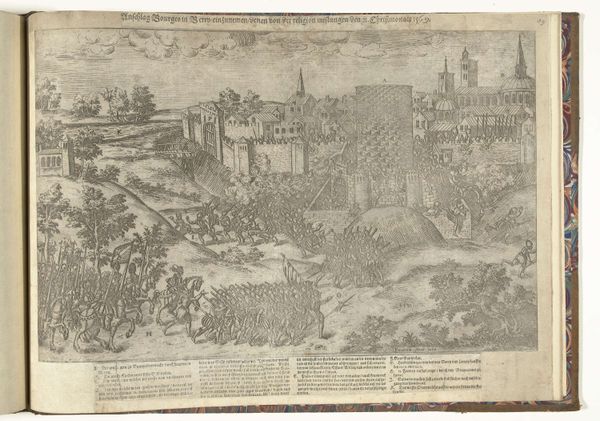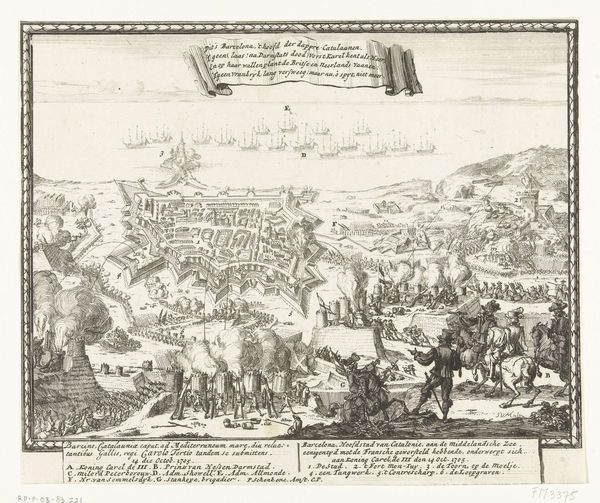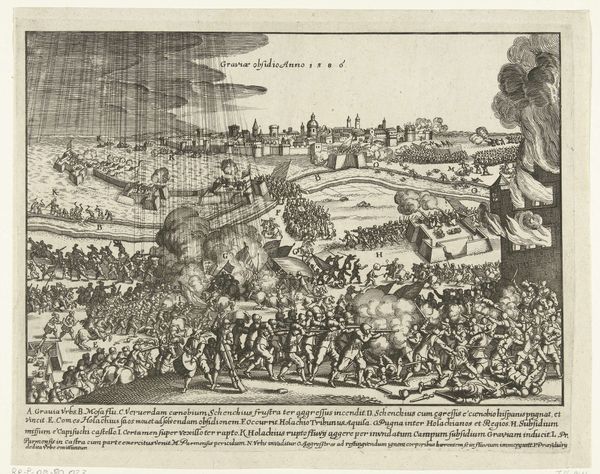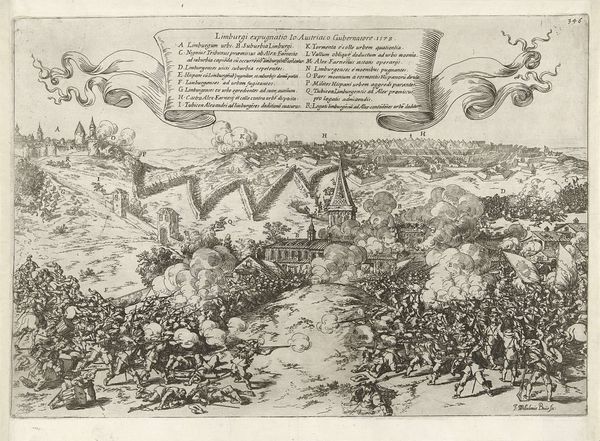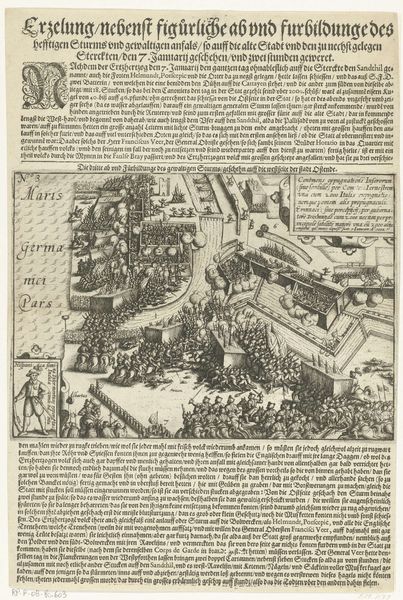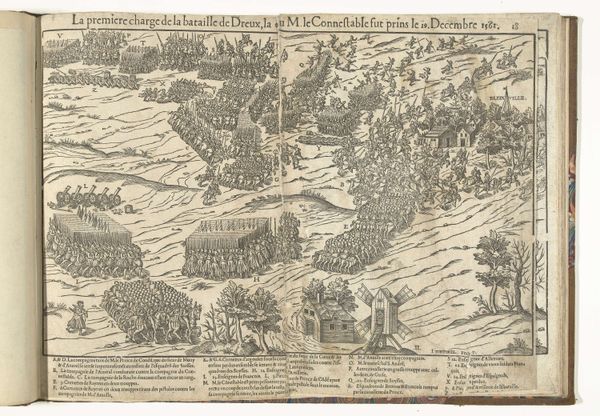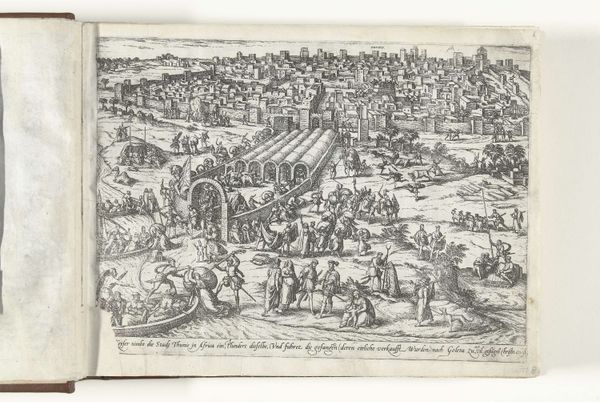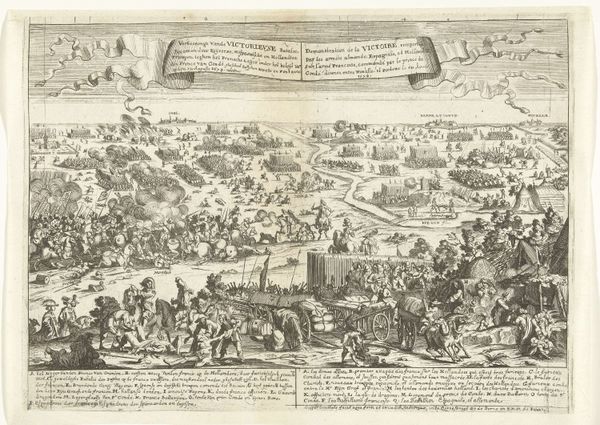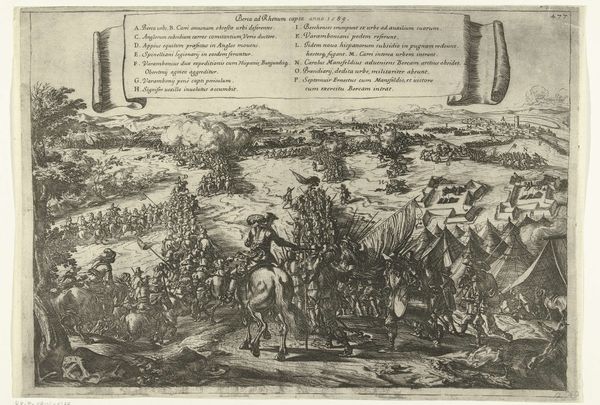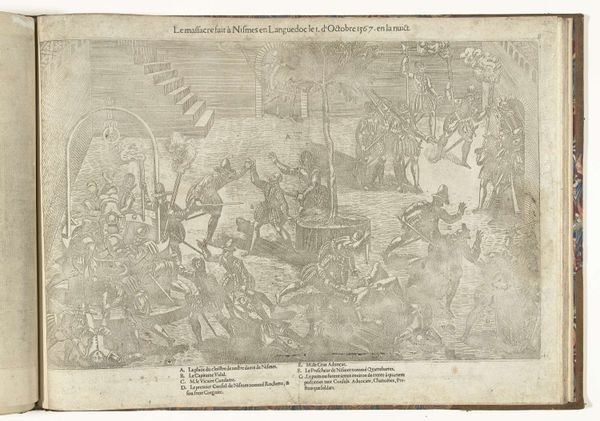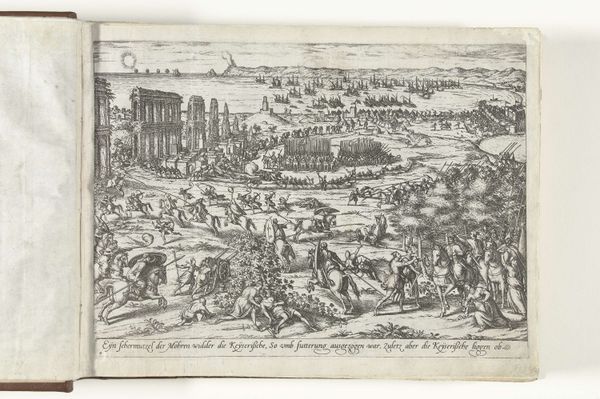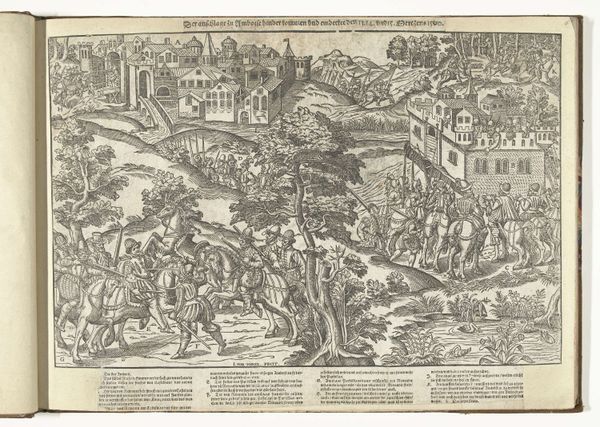
print, engraving
#
narrative-art
# print
#
mannerism
#
line
#
cityscape
#
history-painting
#
engraving
Dimensions: height 376 mm, width 505 mm
Copyright: Rijks Museum: Open Domain
Editor: Here we have "Siege and comparison of Chartres, 1568" by Jean Perrissin, created around 1570. It’s an engraving, so very detailed, and feels like a scene ripped straight from a history book. What’s striking to me is how densely populated the image is; it seems to convey both power and chaos. What do you see in this piece? Curator: The density you note speaks volumes about the anxieties of the time. Perrissin's work offers a critical perspective on power, not just in depicting a military siege, but in revealing the social fault lines it exposes. Consider the historical context: this image documents a conflict within the French Wars of Religion. How do you think the artist is positioning the viewer in relation to this internal strife? Editor: It's interesting you frame it as "internal strife," which does steer me away from a straightforward victory narrative. I suppose it makes me think about the human cost, regardless of who's "winning". The level of detail almost desensitizes you to the violence, it becomes normalized within the chaotic composition. Curator: Exactly! That normalization is precisely where the critique lies. Notice how the lines create a flattened perspective. The siege becomes almost decorative, obscuring the suffering and potentially critiquing the detached, perhaps even aestheticized, view of warfare often presented by those in power. Does that make you think about who gets to control these narratives? Editor: It does. The artist is making us aware of the distance between those experiencing the siege and those who might consume images of it. It’s unsettling how easily violence can be transformed into something almost palatable, or even celebrated. So Perrissin is using Mannerist style and a historical event to… make a statement about conflict, in general? Curator: Precisely. It becomes a commentary on the mechanisms of power, visibility, and historical memory itself. This is not simply a historical record, it is a lens for critiquing the very act of representation, of deciding whose stories get told and how. Editor: Wow, I had never considered an image like this could contain so much commentary. Thanks! Curator: My pleasure. Hopefully it makes us more critical viewers of the narratives we encounter today, visual or otherwise.
Comments
No comments
Be the first to comment and join the conversation on the ultimate creative platform.
